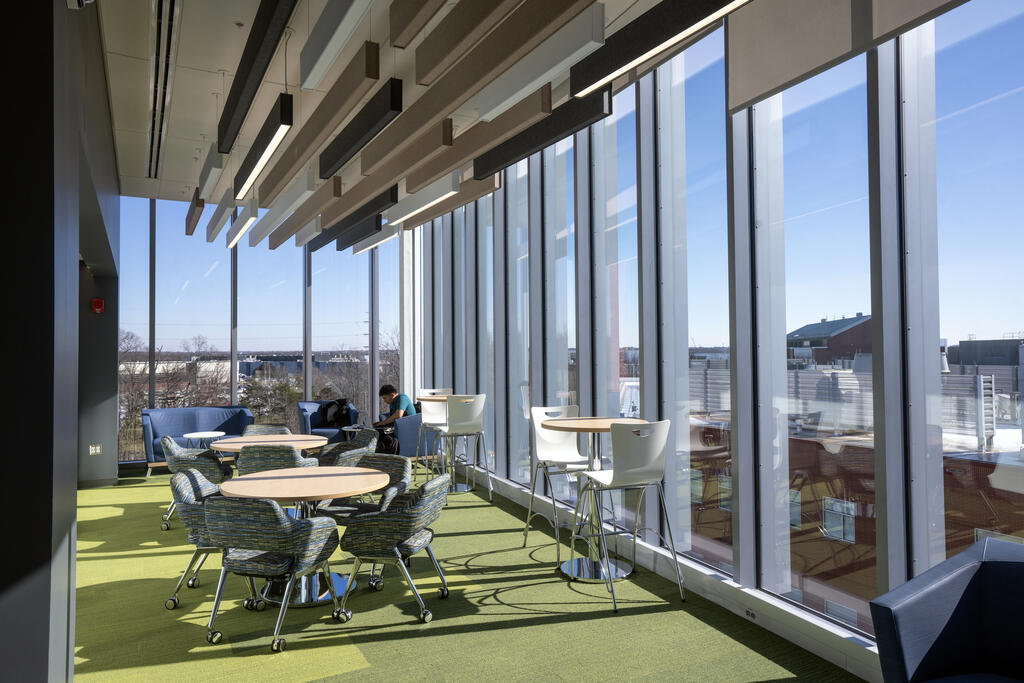Admission CTAs
Dean’s Blog: Summertime Livin’ at Mason Science – Super busy, not easy
Everyone thinks summertime is when faculty and administrators get to take a break. (I’m sure all in higher education academia reading this just laughed out loud). Although that may be true for some K-12 teachers, and only a smaller fraction of students are taking our classes in the summer months, this assumption is far from the truth. In fact, we are having the busiest summer outreach season in my tenure as Mason Science dean and possibly in the history of our college. And there are many staff, faculty and students pitching in to make these activities happen.
Of course, the extremely popular Aspiring Scientist Summer Internship Program (ASSIP) is occurring across a number of Mason’s campuses. Our college leads this program, where a record 200+ students and almost 100 mentors connect to perform impactful research, learn about science educational, career, and innovation opportunities. The Pathways to Quantum Immersion program, this year a week-long residential offering, provided high school students from more than 21 area high schools the opportunity to tour quantum labs on three area campuses, including the Quantum Science and Engineering Center (QSEC) at Mason, and sessions with Mason Science partners, MITRE and NASA. Registration for this year’s high-demand Females of Color and those Underrepresented in STEM (FOCUS) camps was filled to capacity within moments of opening to the public. And our annual STEM Bridge Camp coordinated by the Mason Science STEM Accelerator, this year expanded to a two-week residential effort to help orient incoming Mason first years to fundamental science academic and research expectations while meeting new friends and our Mason Science faculty.
We also launched a number of new outreach efforts this summer. Following on the heels of last year’s first Mason Space Day, we launched the Interstellar Dreams Space Center offering a multi-week camp on the Fairfax Campus for middle schoolers on a mission. Or actually, they are tasked with different projects and themes each week, one of them is planning a mission. (And I heard they even got to meet the Mason food delivering robots too). An aside, mark your calendars to register for or help find sponsors to support the Second Annual Mason Space Day on October 22, 2023.
Driven by the goal to close the gap of mathematics skill mastery brought on by the pandemic, our Math outreach continues to thrive and expand. The Mason Math Bootcamp will serve as a spring board for incoming first year Mason students and a new Mason Math Odyessy camp for rising 6th through 9th graders introduces opportunities to cultivate curiosity and discover cool math concepts in conjunction with the Mason Experimental Geometry Lab.
And another new partnership I am extremely excited about kicks off later this month. George Mason University is partnering with the Virginia Latino Higher Education Network (VALHEN) to proudly offer the VALHEN Hispanic STEM Academy (HSA) designed for rising Virginia high school sophomores and juniors from Hispanic/Latine and other underserved communities.
Participants in the three-day residential program will experience a series of interactive and hands-on sessions across a wide range of STEM disciplines, including tours of Mason’s cutting-edge labs and facilities. Participants will explore this year’s theme, Global Sustainability, while developing effective research and science communication skills. Valhen HSA Guides and fellow students will engage in group research projects addressing real-world scientific problems such as hunger, access to clean water, pollution, and climate change. I can’t wait.
Of course, all of these programs needed significant work to logistically launch, including making the much-desired Mason Science swag, signage, and handouts to promote our brand long after the camp activities have concluded. I am so appreciative of all that behind the scenes work that must occur to orchestrate these successful outreach efforts.
And these Mason Science camps and immersion programs are just the tip of the iceberg. We are rolling out our strategic plan and the college’s new intranet, orienting new students and their families to life at Mason, providing interviews for various media interested in our programs and research, preparing for our part in Mason Now: Power the Possible, the $1 Billion Campaign for George Mason University, and there are many research papers, proposals, equipment and lab set ups, and field work underway. Although I hope we can all spend some quality time with family this summer, for many, it’s a busy yet exciting time for Mason Science.
